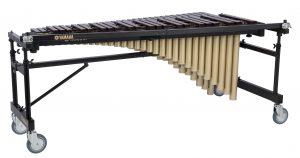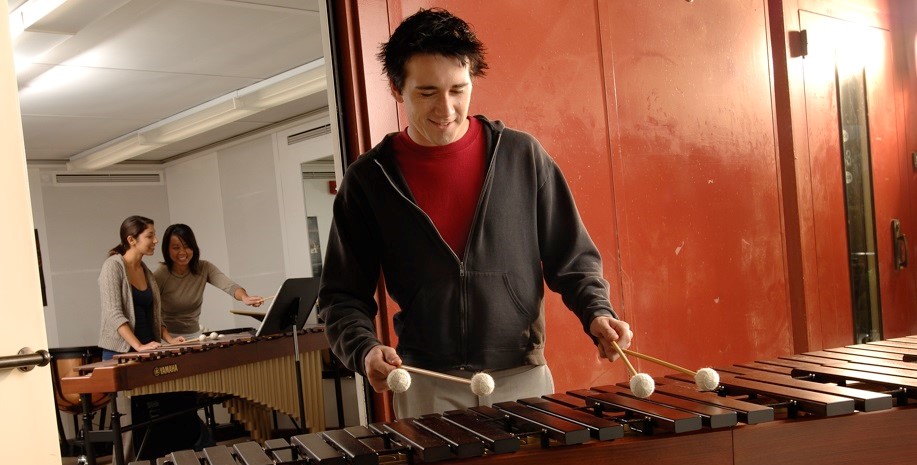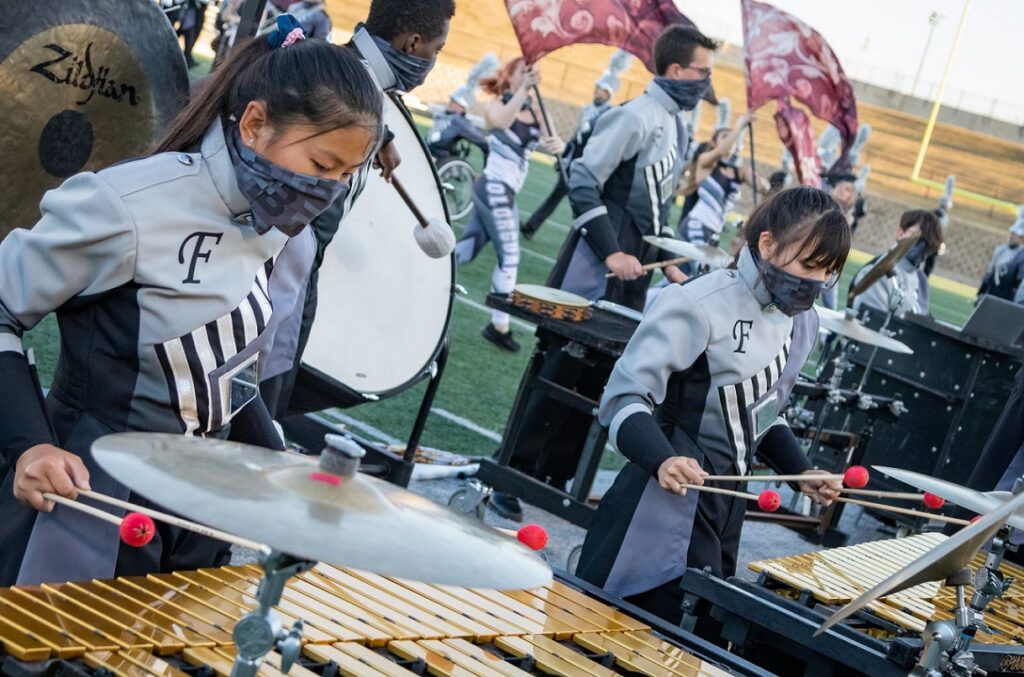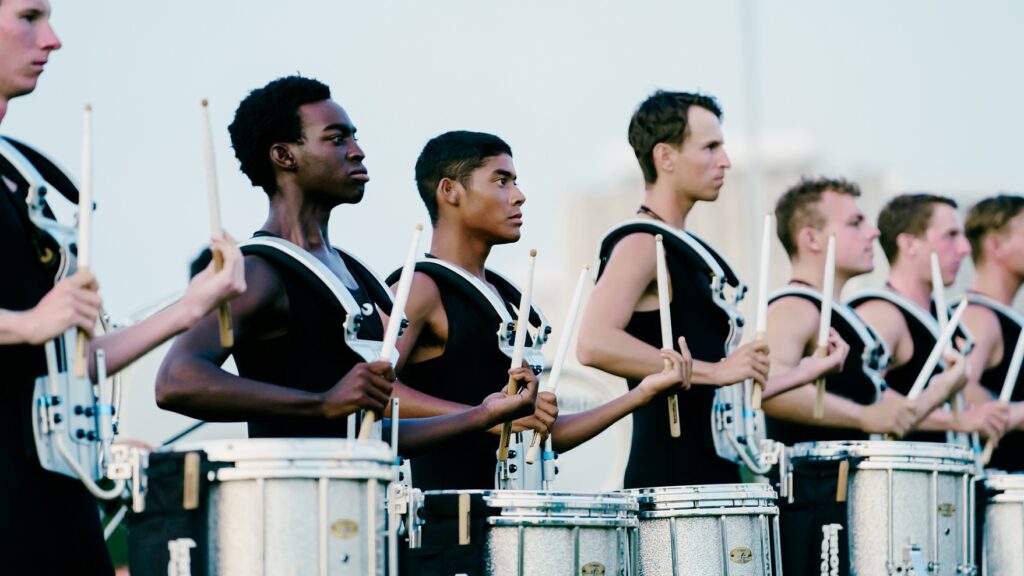What Marimba Should I Purchase for My School?
There are many things to consider when selecting a marimba for your program. Read on for our tips!
All marimbas do not look or sound the same. You might have a marimba in your band room that you’re very familiar with, but when you watch a performance online, you see this giant instrument with way more notes. Yes, both these instruments are marimbas!
Let’s first identify the difference between marimbas, and then you can be better informed to make a decision about which type will best suit your program’s needs.
Brief History
The early modern marimba typically had a range of four octaves. This range from low to high was C3 to C7. Clair Omar Musser was the first to develop the modern marimba and had organized marimba orchestras from the 1930s to the 1950s. These ensembles consisted of hundreds of people, and they began to popularize the marimba by appearing at popular events like the Chicago Fair of 1950. Even though the marimba was gaining popularity, it was not being mass produced.
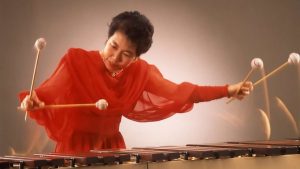
Keiko Abe, an early adopter of the marimba, was constantly working with composers on new compositions and arrangements for this instrument. In 1968, she performed the first full-length marimba recital of works specifically written for the marimba, however, the composers complained that the instrument was not able to fully express their musical ideas.
Abe then began working with Yamaha on extending the range of the instrument, which led to the creation of the 4.3-octave marimba in the early 1970s. This range of marimba gained much popularity; however, it still wasn’t enough range for Abe. This pushed the designers to build the 4.5-octave marimba that added notes to the low end making the instrument’s range from F2 to C7. This marimba better suited her needs, but Abe still wanted more notes. Yamaha then built a prototype extension for the 4.5-octave marimba that went from E2 down to C2. This prototype was able to be pushed up against the side of the 4.5-octave to create the world’s first 5-octave marimba. In the years that followed to the present day, the full 5-octave marimba quickly became the standard.
Read about the history of the 5-octave marimba.
However, the 4.3- and 4.5-octave marimbas are still being produced even though the 5-octave marimba is the professional standard. Why? The simplest answer is that there are still common uses for these different ranged instruments, even the 4.6-octave and 5.5-octave marimbas!
The 4.3-Octave Marimba
The 4.3-octave, along with the 5-octave, is the most common marimba that you will see today. Even though Abe and most other professional marimbists only play 5-octaves, the 4.3-octave is still very popular in K-12 schools and among younger percussionists. Every high school band program needs a 4.3-octave marimba and it is the most common marimba in high school marching bands.
The size is perfect because the frame is smaller and can fit much more easily on your band truck or trailer. It is also much lighter and easier for your students to move around.
The repertoire written for this instrument includes a lot of beginner level works that are perfect for new percussionists. This is because when the marimba was newer and the standard was the 4.3-octave, the level of playing wasn’t as difficult as the repertoire that is played today.
The 4.5- and 4.6-Octave Marimbas
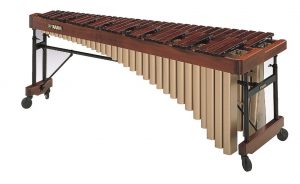 The 4.5-octave marimba only adds four more notes from the 4.3-octave, but this instrument feels much bigger with more range for composition. The 4.5-octave bridges the gap between the 4.3- and the 5-octave marimba. It is popular in higher level high schools and in the marching arts. The majority of modern marching ensembles use 4.5- or 4.6-octave (low E2) marimbas because of the extended range, but they are still more maneuverable than a 5-octave.
The 4.5-octave marimba only adds four more notes from the 4.3-octave, but this instrument feels much bigger with more range for composition. The 4.5-octave bridges the gap between the 4.3- and the 5-octave marimba. It is popular in higher level high schools and in the marching arts. The majority of modern marching ensembles use 4.5- or 4.6-octave (low E2) marimbas because of the extended range, but they are still more maneuverable than a 5-octave.
The repertoire written for this instrument is not as extensive as that of the 4.3 or 5, but you can play everything that is playable on a 4.3-octave as well as a handful of other solo and ensemble pieces. Additionally, the 4.6-octave marimba was created to be able to play classical guitar literature. The standard tuned 6-string classical guitar has E as the lowest note, which is the same low E on the 4.6-octave marimba.
The 5- and 5.5-Octave Marimbas
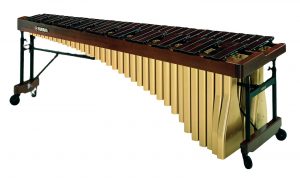 This instrument is considered the professional standard. Almost all modern marimba compositions are written for this instrument and nearly every piece that has been written for the marimba can be played on the 5-octave. It offers the widest range of notes as well as the warmest tone quality in the bass register.
This instrument is considered the professional standard. Almost all modern marimba compositions are written for this instrument and nearly every piece that has been written for the marimba can be played on the 5-octave. It offers the widest range of notes as well as the warmest tone quality in the bass register.
Although this instrument isn’t seen much in many high schools, it is a must-have for college and professional level playing. The 5-octave marimba is played by every professional and aspiring marimbist.
A 5.5-octave marimba also exists, which extends up to G7, but there are very few scenarios that would require this instrument. The reason it was developed was to play European classical literature on the marimba.
Bar Type
The price of marimbas can vary widely — there are 4.3-octave instruments that range in cost from $3,000 to $10,000. The material that the bars are made of is usually the determining factor when it comes to price. Rosewood is the standard for professional marimbas, but it is an endangered type of wood. Because rosewood is so expensive, companies have been developing synthetic alternatives that most closely resemble rosewood’s sound. These alternatives, which include Acoustalon™, are much better for outdoor use and do not suffer the same wear and tear that rosewood bars do.
For K-12 schools and marching bands, you will likely only need marimbas with Acoustalon™ or synthetic bars. For college level and above, you will want a rosewood instrument.
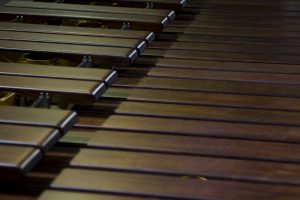 Rosewood feels much different to play because of the way it gives when you strike the bars compared to its synthetic counterpart. In the last decade, a great alternative to rosewood called padauk wood has become popular. While this wood doesn’t quite sound as full as rosewood, it is a great substitute for schools and musicians who can’t afford a rosewood instrument but still want a marimba that has the same feel as that of professional rosewood marimbas.
Rosewood feels much different to play because of the way it gives when you strike the bars compared to its synthetic counterpart. In the last decade, a great alternative to rosewood called padauk wood has become popular. While this wood doesn’t quite sound as full as rosewood, it is a great substitute for schools and musicians who can’t afford a rosewood instrument but still want a marimba that has the same feel as that of professional rosewood marimbas.
Exceptions
Most high school marching bands do not require rosewood bars because they will crack and need to be replaced often. Acoustalon or synthetic bars will last significantly longer because they don’t crack from normal playing.
However, there are some high schools that have a 5-octave rosewood marimba for their concert percussion ensemble and concert band. Most drum corps also use rosewood bars because these instruments sound better, and these groups can afford to replace their bars regularly.
Things to Consider
Always cover your marimba when it’s not in use. This prevents dust from getting into the resonators as well as accidental damage to the instrument from passersby.
Routine cleaning is also essential. Use a slightly damp towel to wipe down the bars and frame to remove dust and dirt. Higher end instruments tend to be more delicate and require more care and maintenance. Rosewood instruments should always be stored indoors because the bars and resonators fluctuate with temperature. Also, be careful which mallets you use on rosewood marimbas. Mallets that are too hard might crack the low-end bars.
Read more about marimba care and maintenance and off-season maintenance for percussion instruments.
For instruments with synthetic bars, storage temperature is not as essential to the upkeep of sound quality which is why these instruments are perfect for high schools, marching bands and most other situations where the instruments will be played in many different venues.










